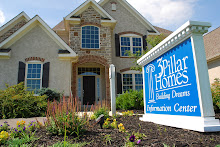Remember the old center-of-the-ceiling light fixture? You entered a room, hit the wall switch, and a couple of light bulbs behind a semi-transparent plate shed general, flat light over the whole room. All features of the room, good and bad, got the same emphasis. There was enough light to avoid tripping over the dog, but not enough light to read by.
Things have changed. Lighting is now a sophisticated design element of the modern home, whether that home is traditional or contemporary in style. Every aspect of lighting -- placement, function, control, style, energy-efficiency -- has evolved to offer exactly what is needed in each room.
The thoughtful placement of lighting fixtures with specific function can make a dramatic change in a room. For example, instead of a big overhead fluorescent panel, new kitchens now feature task-specific fixtures such as recessed spot lights over the sink and other work stations, strip lights under wall cabinets, or dropped fixtures over work islands or eating areas. Other examples of task lighting include automatic bulbs in cabinets and pantries, up- and down-lights that showcase landscaping or artwork, and fixtures positioned to throw light on stair treads.
Lighting controls have also come a long way from the simple wall-mounted switch. Homeowners can program or manipulate lighting schemes to create custom ambiance for a casual dinner party or an intimate evening at home. Timers, remote controls, dimmer switches, and motion sensors enhance the flexibility, beauty and convenience of a lighting design using both wired and wireless technologies.
Besides increasing the technical sophistication of their products, lighting manufacturers have had to keep up with current styles and fashions. Pendants, wall sconces, chandeliers, and domed fixtures are available in an almost endless array of styles and finishes. In addition, lighting suppliers have developed a greater range of compatible fixtures to achieve a coordinated look for all lighting products in the house.
Security lighting has also grown in popularity in recent years. Inside the home, high tech wired and wireless timers can be programmed to create the illusion of activity while the owners are away. Outside, motion-activated lighting is a basic feature, especially at entries. Outdoor fixtures can highlight house numbers to assist emergency services. Lights in the garage and house can flash on and off as part of a security system that alerts neighbors or police of an unauthorized intrusion.
Outdoor light fixtures are increasingly powered by solar energy and light sensors to save even more electricity. Small photovoltaic cells are built right into path and landscape products to power them only at night. These systems require no wiring or current from another source, making them safe and easy to replace as needed. Homeowners enjoy the added convenience and beauty of outdoor lighting, whether or not they remember to turn them on or off.
Professional builders incorporate modern lighting design and products in their new homes, adding long-lasting value while enhancing style, convenience, comfort, security, and efficiency.
skip to main |
skip to sidebar
We are a new home builder offering custom home plans to meet your lifestyle and budget. Whether you are in the market for a new, semi custom or custom home, we can help you achieve your dream.
3 Pillar Homes
5710 Delano Ave
Lewis Center, OH 43035
(740) 548-8599




